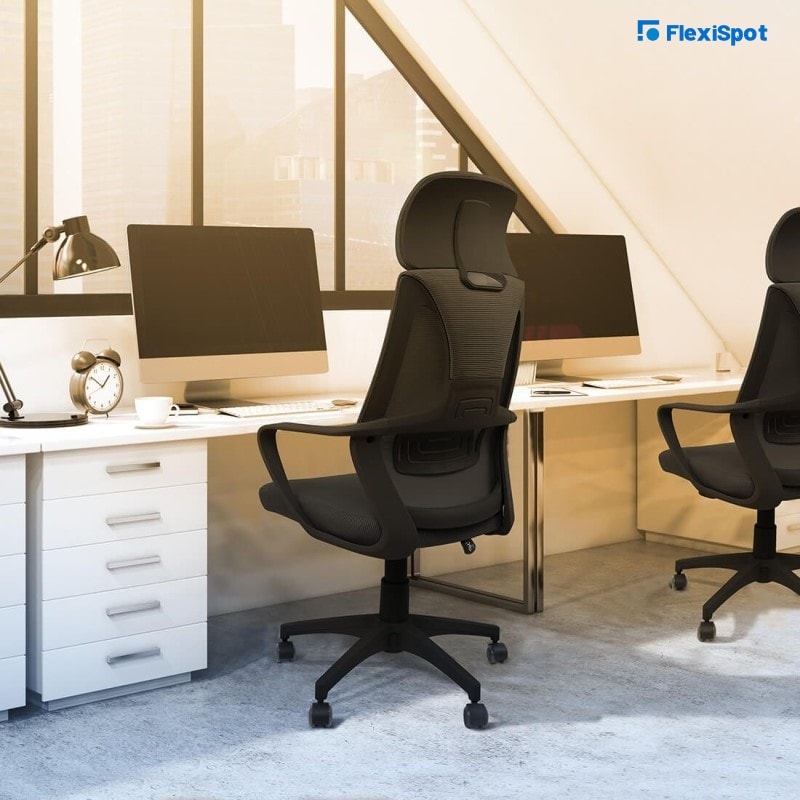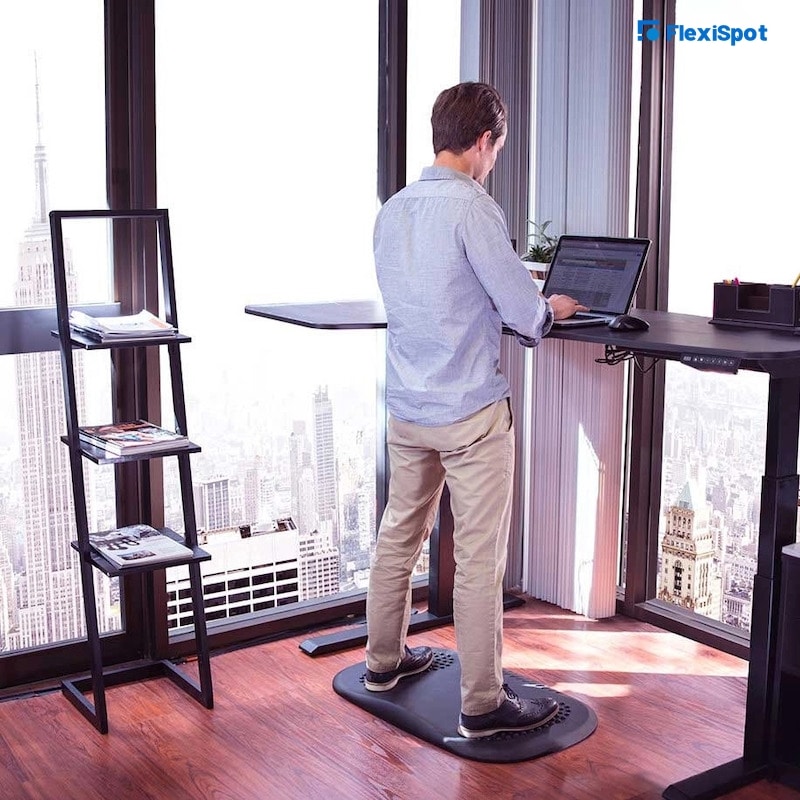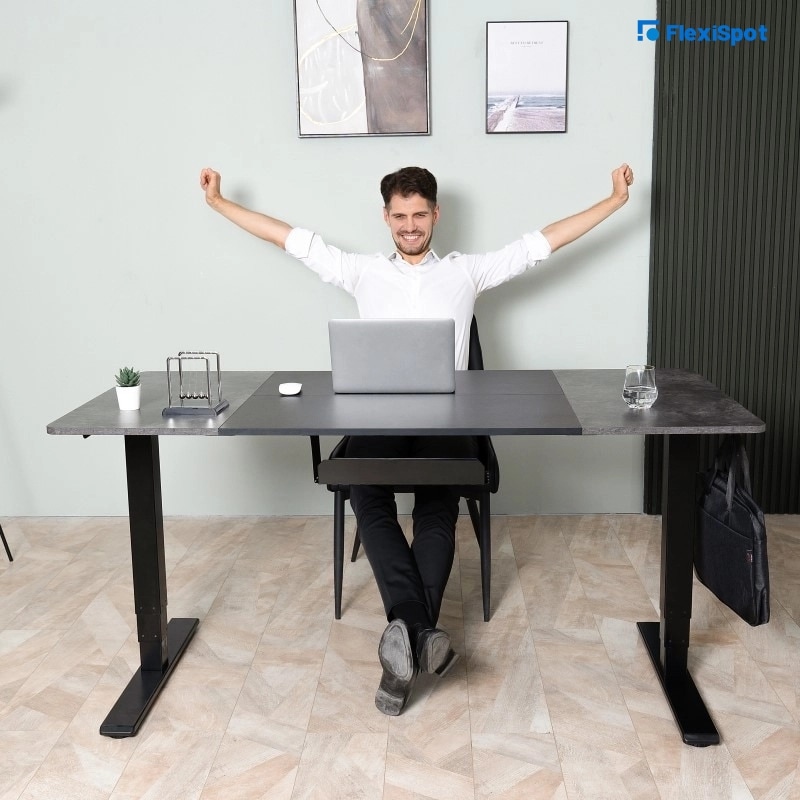Back pain due to long hours of sitting is a prevalent health problem worldwide, primarily among people who work at a computer all day. Due to the ever-increasing cases of backache patients, a bunch of precautionary and remedial measures keeps surfacing. One such counter solution to back pain is the use of an ergonomic chair.
Ergonomic office chairs are designed to adjust to the user's body and proportions and not the other way around. That is, in the past, desk employees would twist and turn in their office seats trying to find the perfect seating position to support their back and posture. However, none of their efforts made much difference due to the inflexible chair design. In some workplaces, you may find people contorting their bodies to adjust in their seats even today when ergonomic chairs have gotten so common.
All that is to say, you can greatly improve your spinal alignment and posture with an ergonomic chair, which will automatically reduce pain in your back. That said, picking just about any ergonomic chair for yourself may not do the job. You need to find the perfect model to suit your postural needs. To help you do that, here are some useful tips to choose an ergonomic chair for your home office or regular workplace.

Choosing the Best Ergonomic Office Chair
When it comes to picking out an ergonomic chair, function trumps looks. In other words, if you want to benefit from your office seat, you should select one that provides the utmost comfort to your body.
Consider the Seat Height
A good ergonomic office chair has the provision to adjust the seat height. Whenever you have to buy one, be sure that it features a pneumatic lever to elevate or lower the chair. Height adjustability is essential in ergonomic chairs because it ensures that the user's feet lay flat on the floor and thighs parallel to the floor without excessive pressure on the outer thighs.
When you sit, and your feet are not reaching the ground, you push your legs forward, creating pressure on your thighs (especially the part touching the seat). This posture can lead to poor blood circulation in the lower legs. Therefore, having the option to modify chair height is crucial for ergonomic chairs.
Consider Lumbar Support
IF you already have pain in your lower back or are susceptible to developing it, you should look for a chair with superior lumbar support. Lumbar support is important to keep the lower back slightly arched, maintaining the spine's natural shape and alignment.
When a person sits without support to their lower back, it sustains a lot of unnecessary pressure and loses its natural position. Our spine is structured like the alphabet 's,' with the upper part of the spine curving outward and the lower part curving inwards. Without lumbar support, the curve in a person's lower spine deepens, distorting the spinal structure. Therefore, having a good lower backrest is critical, so don't forget to check it when buying your next ergonomic office chair.
Check the Seat Width and Depth
If you want to sit comfortably in your office chair, it needs to offer you sufficient space to settle down. For this reason, your office chair's seat should be significantly wide and deep.
If you don't consider your seat's width and depth before buying, you may have trouble down the line. Therefore, ensure that the furniture model you buy offers you plenty of sitting plane.
Backrest and Armrest
As already discussed in the lumbar support section, our spine has a specific shape that becomes distorted if we don't sit right. This means that apart from good lumbar support, you need a solid backrest in your ergonomic chair so that you don't put unnecessary pressure on your spine.
Furthermore, wide armrests are also crucial in an office chair as they allow you to keep your arms in the correct position- one that doesn't strain your muscles. If a person doesn't place their arms parallel to the floor with their elbows perpendicular to the upper arms, they put excessive pressure on their arms.
Moreover, it must be noted that sometimes having wide armrests isn't enough to keep your arms well-rested while working if your workstation and arms are not on the same height level. That is, often, you may find that your work surface is higher than your chair, which positions the hands such that the lower arms are elevated to reach the keyboard while the elbows rest against the armrests. This placement of hands creates a lot of pressure on the user's arms, particularly the area near the wrists that comes in contact with the edge of the tabletop.
To avoid that, keeping the lower arms and elbows on the same level as the work surface is vital. That is where having a height-adjustable chair can make a world of difference, as it will allow you to adjust your seat's elevation according to your workstation. As a result, you can easily type and use your computer without straining your arms.
If you take the factors mentioned above into account when buying an ergonomic office chair, you will not suffer from discomfort while using it. When users don't thoroughly examine the features of a model and purchase it, they often end up asking questions such as, 'why is my ergonomic chair so uncomfortable?'
With all that said, it is worth mentioning that, at times, getting an ergonomic chair may not be enough, and you may have to employ a few tips and tricks to keep your backache at bay. These tricks are related to how you use your office furniture and whether you take breaks during the day or not. To help you learn all the tips on ergonomic office chair use, here is an in-depth explanation of each.
Tips on Using Ergonomic Office Chairs
Just because you have an ergonomic chair doesn't mean you will not have any back pain moving forward. Regardless of how premium your office chair is, you need to use it well and follow these usage guidelines to ensure you never suffer from backache.

1. Switch Between Standing and Sitting
No matter how comfortably you sit in a chair, staying in one position for hours on end is unhealthy. It can impair the blood circulation in your body and cause muscle soreness. Therefore, when working at a desk, you must get up every 20 minutes to walk a little.
You can increase the duration from 20 to 40 minutes at times, but try to keep it as short as possible. Doing so will keep your body alert and prevent unnecessary pressure buildup on any of your body parts.
If you tend to get overly absorbed in work, you can set reminders on your phone to stand up every little while. Or you can download an app that sends you notifications when it's been too long in one position.

2. Use an Alternating Standing Desk
Standing desks are a modern-day piece of office furniture that's incredibly useful, not to mention beneficial for the body. As the title suggests, a standing desk is constructed in a way that the user has to stand in order to use their workstation. This eliminates long hours of staying seated for work, which is better for one's health.
That said, for some people standing nonstop for hours may not be feasible. If that is the case with you, you can opt for an adjustable or alternating standing desk that will go up and down as needed. Such a table model comes with the provision to change its height so that users can set their workstations according to their needs.

3. Stretch Your Muscles Every Few Hours
Although stretching at the office may seem strange, it is crucial if you want to keep yourself pain-free. You must stretch your back, calves, neck, and arms every chance.
You don't need a lot of space to do that, nor do you need to be too conspicuous while stretching. There are many moves that you can perform while seated to avoid attracting attention. Such stretches include
a. Neck stretch. Drop your neck to one side (either left or right) and let it in the same position for a few seconds. Then slowly bring it up and drop it on the other side. Repeat the motion twice or thrice to feel a burn in your neck muscles.
b. Arm stretch. Extend your arm diagonally to the opposite side while looping your other hand under the extended arm to hold the shoulder. Let's say you put your right arm forward and twist your left hand from under the extended arm to clutch the right shoulder. Then stretch your right arm as far as you can. When you do that, you will feel a stretch in your upper arms and upper back muscles. Switch arms to stretch both sides.
c. Calf stretch. Extend your legs as far as you can, then push the balls of your feet forward to stick them out. Doing so will stretch your calves. Continue going back and forth between sticking the balls of your feet out and in to feel a burn in your calf muscles.
These are just some examples of stretches that you can try at work to improve your posture and blood circulation in your muscles. If you cannot do such movements at work, be sure to do them at home after work to loosen up your tissues.
Ending Note
Back pain is a common bane among office workers everywhere. However, the good news is that with a little conscious effort and the right office furniture, you can save yourself from unnecessary discomfort.